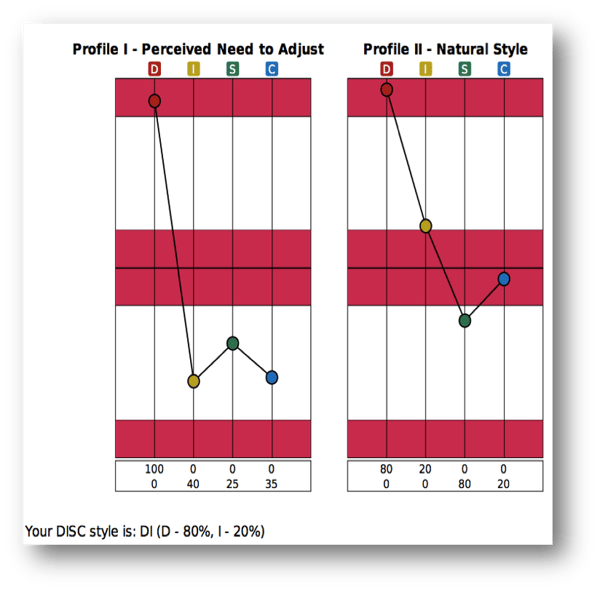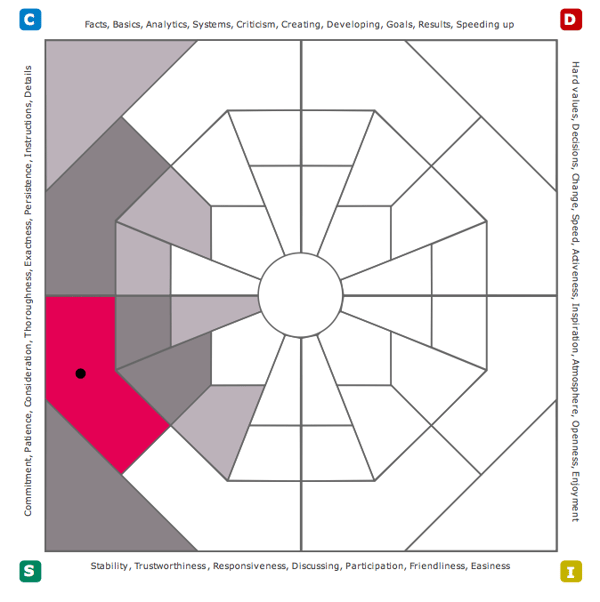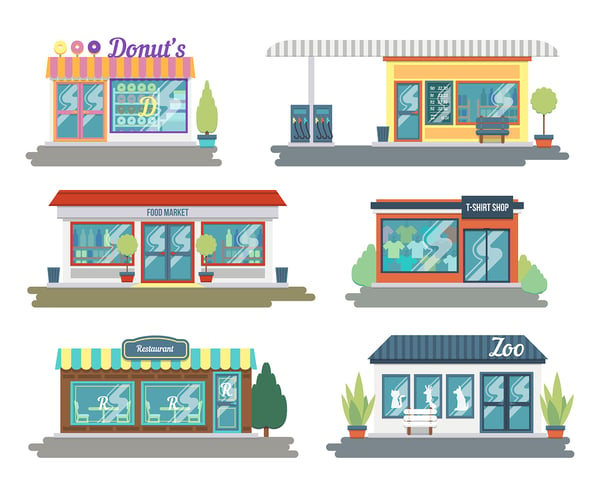Have you ever wanted a clear way to understand and explain the shaded Comfort Zone on the Extended DISC® Diamond?
In the DISC reports, you may have a vague idea of what the Comfort Zone represents or you may overlook it altogether, but there is a simple way to understand and explain it. First off, we have different options for identifying a person's DISC profile.
 We can view their profile graphs, which are the most specific representation of their DISC style. They explain the relationship of all four DISC styles; which styles are natural and which are not natural. We can use the Extended DISC® Diamond to look at their Profile I and Profile II results and view their Comfort Zones. Comfort Zones are helpful in understanding the relationship of a person's DISC styles.
We can view their profile graphs, which are the most specific representation of their DISC style. They explain the relationship of all four DISC styles; which styles are natural and which are not natural. We can use the Extended DISC® Diamond to look at their Profile I and Profile II results and view their Comfort Zones. Comfort Zones are helpful in understanding the relationship of a person's DISC styles.
Overview of the Comfort Zone
 The Extended DISC® Diamond is divided into four quadrants. Each of the four quadrants represents D-style, I-style, S-style, and C-style. The dot on the Diamond represents the exact location of the person's natural style (Profile II), whereas, the pink colored section identifies the area of the person's natural style. In the example above, the person's dominant style is S-style because the dot is located within the S quadrant. The dot is, more specifically, located in the shaded SC-style section of the S quadrant; identifying this person as a SC profile.
The Extended DISC® Diamond is divided into four quadrants. Each of the four quadrants represents D-style, I-style, S-style, and C-style. The dot on the Diamond represents the exact location of the person's natural style (Profile II), whereas, the pink colored section identifies the area of the person's natural style. In the example above, the person's dominant style is S-style because the dot is located within the S quadrant. The dot is, more specifically, located in the shaded SC-style section of the S quadrant; identifying this person as a SC profile.
Simply put, all shaded areas, regardless of shade color, show the most comfortable behavioral styles for the person. These shaded areas are known as the Comfort Zone or the Flexibility Zone. The unshaded DISC quadrant(s) represents the DISC styles requiring more energy from the person. An easy way to think about it - the shaded areas require little or no energy, whereas, non-shaded areas require significant energy.
It's a map of your Comfort Zone

A clear way to explain the Comfort Zones to your clients is by using an analogy they're already familiar with; their personal map. We've already identified the darkest, colored section as their natural style, known as their Current Zone (pink section in the above Diamond sample). Their Current Zone is like their home; where they are typically most comfortable and most likely their true self. They tend see to see it as their safe area.

The darker gray shaded area is called their Natural Flex Zone. Often, during the course of the, day, they will frequently shift to these DISC styles without any additonal thought or energy. These are temporary shifts in response to the pressures they feel from their environment. Once the pressures of the environment are no longer present, they will naturally go back to their Current Zone. Have your client compare the Natural Flex Zone to their neighborhood. They are comfortable walking around their neighborhood and know their surroundings. 
The lighter gray area is called the Easiest Development Zone because because it typically takes a brief adjustment that doesn't require too much thought or energy. The Easiest Development Zone is also like their neighborhood; they have familiar routes they drive and stores they frequent. Let's say they happen to have a donut obsession and heard about a brand new donut shop that just opened up nearby. They know the address, but can't remember the exact block it's on. They will start on one block and make adjustments to keep driving until they find it. The styles in the Easiest Development Zone may require some brief adjustment to their style, but it won't take much energy.
Venturing outside your Comfort Zone

The styles in the white areas of the Diamond are in the Most Difficult to Develop Zone. These styles often take the most energy for the person. The behaviors tend to feel less comfortable. Simply put, we are outside of our comfort zone.
The behavioral adjustments to these styles are about energy, and not ability. The further away they are from their Comfort Zone, the more energy and effort is required for those DISC styles. Even though they are going outside their comfort zone, they can still present those behaviors; it's not a predictor of how well they are able to perform those behaviors.
The Most Difficult to Develop Zone is like going into the big city or the other side of town not often visited. For example, we go to the theater district to watch a play or meet friends for dinner. We program our GPS, but still manage to get lost or struggle to find a parking spot. Finally, we park the car, find the restaurant, and end up having a great time. Now we're driving home - have you ever seen the exit to your house and let out a sigh of relief all the while thinking, "whew! I'm home!" Haven't we all felt that at some time or another?
It's because we went outside our Comfort Zone; whether it's the D-style feeling stressed because they were in a hurry and got stopped by a talkative co-worker, or the S-style who is asked to make fast, hard decisions on their own.
Debriefing the Comfort Zone to your client
We often prefer our natural styles because it takes the least amount of energy and is our most comfortable way of doing things. However, we are more complex than a dot on the Diamond. Therefore, our Comfort Zones represent how our natural styles can flex to cover additional styles. These shaded areas are the styles we can flex to all day long, without additional energy. We prefer our natural style, but we can adjust easily to the shaded areas for short periods of time. We use energy when we are outside our Comfort Zone. The Comfort Zone is all about energy.
Understanding our Comfort Zones enables us to be more conscious of when we are outside of it and being able to anticipate the challenges. We can even practice some of those less comfortable behaviors so that they become easier over time. Understanding our Comfort Zones can help us reach the end goal, which is to modify our behaviors to be more successful!

